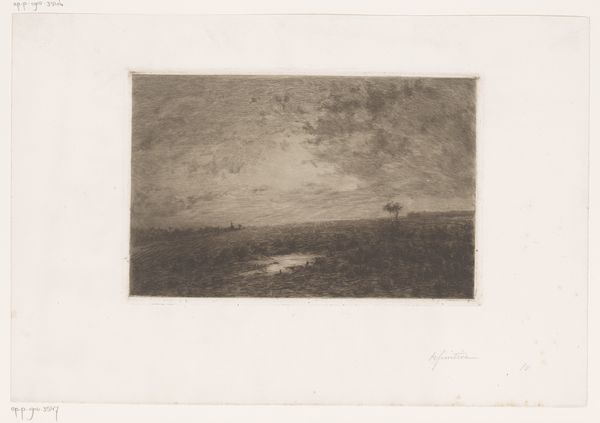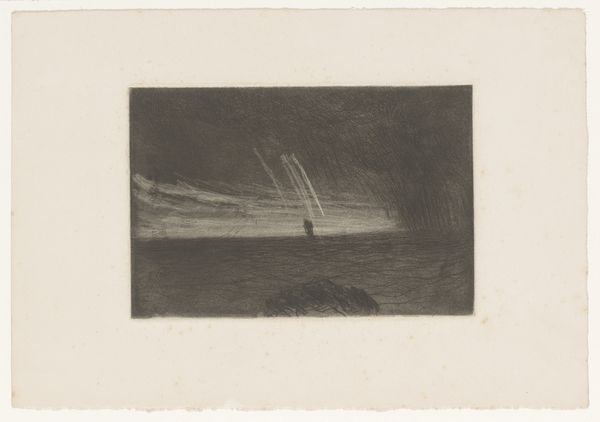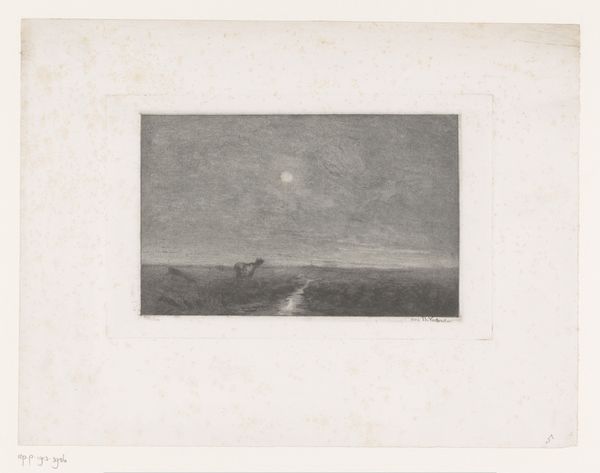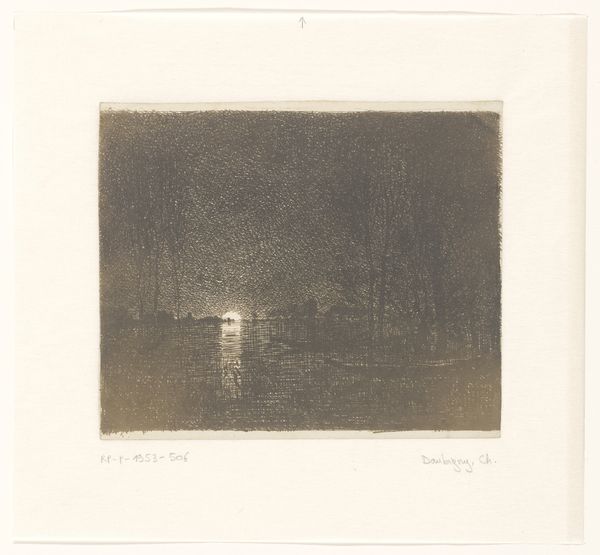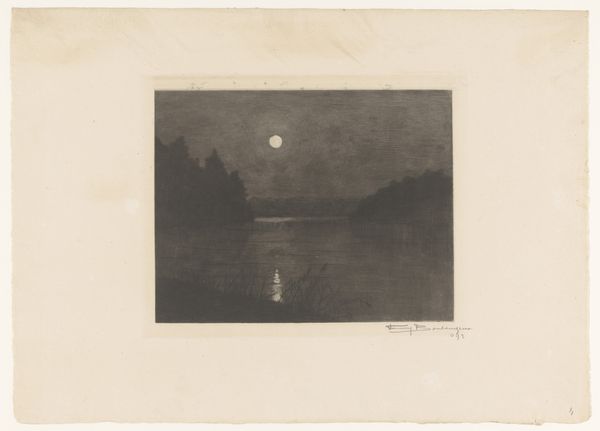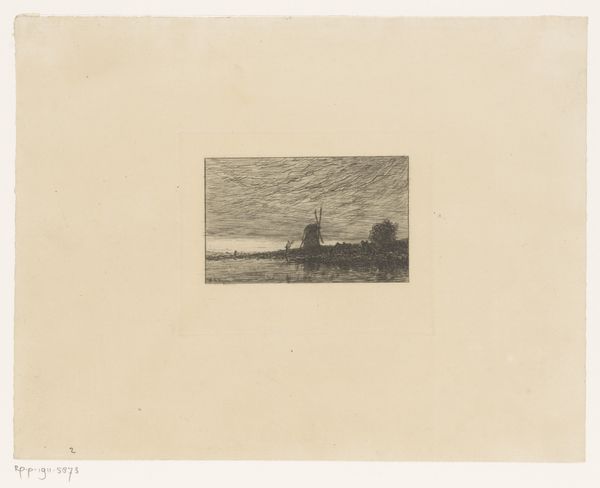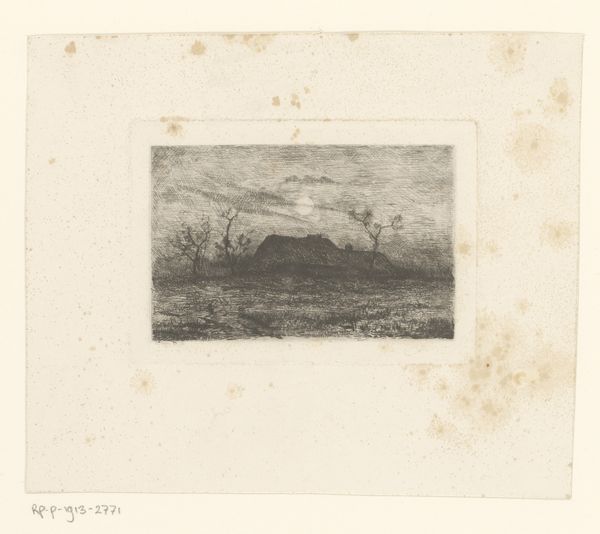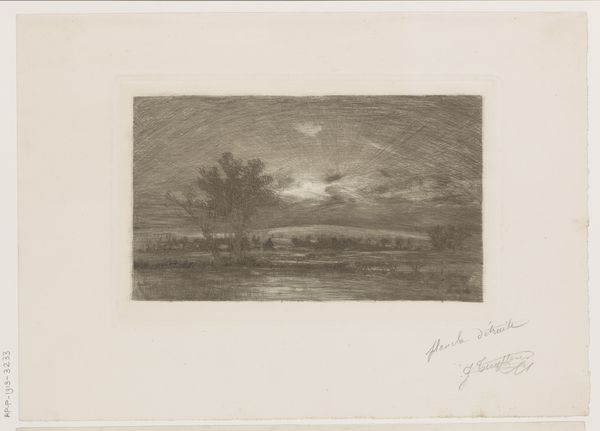
print, etching
# print
#
etching
#
landscape
#
symbolism
#
sea
Dimensions: height 120 mm, width 168 mm
Copyright: Rijks Museum: Open Domain
Curator: Standing before us is Omer Coppens' etching, "Zee bij maneschijn," or "Sea by Moonlight," likely created between 1874 and 1909. It is a fantastic example of his printmaking. Editor: It's quite evocative. I'm immediately drawn to the radiating lines around the moon. There's a sense of something ancient and cyclical, perhaps a reflection of time itself. The overall feeling is ethereal and calming. Curator: Absolutely. Coppens worked within a fin-de-siècle artistic milieu grappling with themes of spirituality and the sublime. The late 19th-century Symbolist movement emphasized inner psychological realities and mysterious themes, a deliberate move away from the focus on realism of prior movements. Editor: And the moon as a symbol is richly layered. Historically, the moon governs tides, emotions, and the subconscious. Here, the light cast on the water, that almost blinding shimmer, hints at an intuitive, perhaps even divine, knowledge. There's an enduring allure to moonlight. Curator: Given Coppens' training, and his exhibitions with La Libre Esthétique, these symbolic dimensions resonated with a broader intellectual shift towards the exploration of subjective experience. Editor: One could argue this simple etching foreshadows the total eclipse obsession in Modern Art, and reminds viewers that the night, historically "dangerous," is also illuminating. In its darkness lies potential for knowledge. Curator: A very compelling connection! Coppens used etching— a method embraced by artists of this era due to its capacity to render tones, to convey atmosphere in such small prints. They became more easily distributed, and affordable, thus allowing the artist to share his perspectives across greater geographical and social strata. Editor: Seeing this piece encourages introspection and reverence. It shows how symbolism, deeply embedded in the past, has power over our contemporary emotions, too. Curator: It shows us how a relatively small print reflects larger cultural and intellectual shifts during a pivotal era.
Comments
No comments
Be the first to comment and join the conversation on the ultimate creative platform.
